Resources
While a number of scholars in the field of Christian theology have argued for the importance of teaching diversity and social justice in theology and religious studies classrooms, little has been done to document and assess formally the implementation of such pedagogy. In this article, the authors discuss the findings of a yearlong Scholarship of Multicultural Teaching and Learning (SoMTL) study, which examined student learning and faculty teaching regarding race and white privilege in two theology classrooms. After a brief overview of the study's design and execution, we reflect upon our findings and draw out implications for pedagogical practices. In particular we discuss students' emotional responses to the material and the role of cognitive dissonance in student learning with respect to racial inequality via social structures. See a companion essay in this issue of the journal (Karen Teel, “Getting Out of the Left Lane: The Possibility of White Antiracist Pedagogy”) and responses by the authors of both essays, also published in this issue of the journal (“Responses: Toward an Antiracist Pedagogy”).
This article maintains that knowledge of the literature on multicultural education and social justice pedagogy is indispensable for white college professors who desire to teach effectively about racial justice concerns. In exploring this literature, I have noticed that many publications either articulate theory or reflect on concrete classroom strategies, while relatively few deploy theory to evaluate specific attempts at teaching for justice. This seems to me a gap worth filling. Speaking as a white, conventionally trained, Catholic theologian, I begin by explaining why I deem it appropriate to employ antiracist pedagogy. I then demonstrate that the literature on multicultural education and social justice pedagogy is essential to this effort by utilizing both types of literature, theoretical and practical, to analyze my own strategies and goals to date. Throughout, I discuss white antiracist theological pedagogy not as an accomplished fact, but as an emerging endeavor. See a companion essay in this issue of the journal (Anna Floerke Scheid and Elisabeth T. Vasko, “Teaching Race: Pedagogical Challenges in Predominantly White Undergraduate Theology Classrooms”), and responses by the authors of both essays, also published in this issue of the journal (“Responses: Toward an Antiracist Pedagogy”).
While teaching a course on religion and consumer culture in the United States, the author was intensely preoccupied with holding the interest of her undergraduate students during class sessions. Inspired in part by the subject matter of the course, she reflects here upon the extent that her courses on American religion drew upon the semiotics of commercial entertainment. While acknowledging the limitations and distortions possible in thinking of the teacher as an entertainer, this paper explores the teaching metaphor of the Vaudevillian Performer, arguing that if put in context with the work on reception in cultural studies, it can be a helpful model in the classroom.
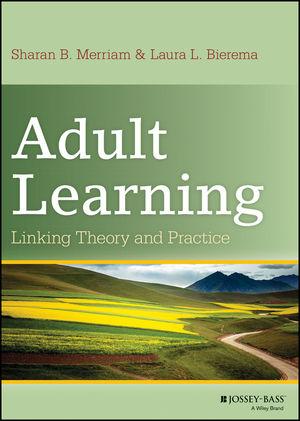
Click Here for Book Review Abstract: Solidly grounded in theory and research, but concise and practice-oriented, Adult Learning: Linking Theory and Practice is perfect for master’s-level students and practitioners alike. Sharan Merriam and Laura Bierema have infused each chapter with practical applications for instruction which will help readers personally relate to the material. The contents covers: Adult Learning in Today’s World Traditional Learning Theories Andragogy Self-Directed Learning Transformative Learning Experience and Learning Body and Spirit in Learning Motivation and Learning The Brain and Cognitive Functioning Adult Learning in the Digital Age Critical Thinking and Critical Perspectives Culture and Context Discussion questions and activities for reflection are included at the end of each chapter. (From the Publisher)
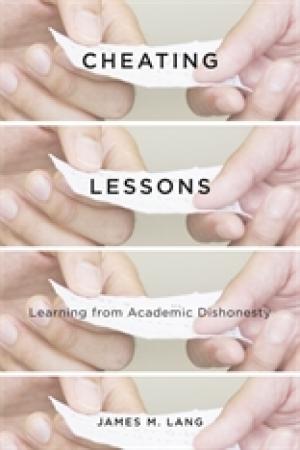
Click Here for Book Review Abstract: Nearly three-quarters of college students cheat during their undergraduate careers, a startling number attributed variously to the laziness of today’s students, their lack of a moral compass, or the demands of a hypercompetitive society. For James Lang, cultural or sociological explanations like these are red herrings. His provocative new research indicates that students often cheat because their learning environments give them ample incentives to try—and that strategies which make cheating less worthwhile also improve student learning. Cheating Lessons is a practical guide to tackling academic dishonesty at its roots. Drawing on an array of findings from cognitive theory, Lang analyzes the specific, often hidden features of course design and daily classroom practice that create opportunities for cheating. Courses that set the stakes of performance very high, that rely on single assessment mechanisms like multiple-choice tests, that have arbitrary grading criteria: these are the kinds of conditions that breed cheating. Lang seeks to empower teachers to create more effective learning environments that foster intrinsic motivation, promote mastery, and instill the sense of self-efficacy that students need for deep learning. Although cheating is a persistent problem, the prognosis is not dire. The good news is that strategies which reduce cheating also improve student performance overall. Instructors who learn to curb academic dishonesty will have done more than solve a course management problem—they will have become better educators all around. (From the Publisher)

Journal Issue.
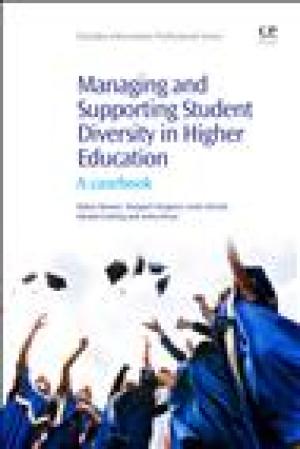
Click Here for Book Review Abstract: Government initiatives in many countries emphasise social inclusion in higher education, resulting in a more diverse student population. This presents opportunities and challenges for academic and professional staff in managing and supporting these students. Managing and Supporting Student Diversity in Higher Education focuses on how students succeed amidst a culture of widening participation. The book is divided into seven chapters. The first introduces current literature and policies to present an international perspective on widening participation in higher education. The following five chapters present students’ stories on topics including getting into higher education, the international experience, coping with education later in life, and identity. Stories are followed by implications for management and support, and discussion topics for practitioners. The book concludes by looking at how students succeed in higher education and the implications for managing and supporting student diversity. (From the Publisher)
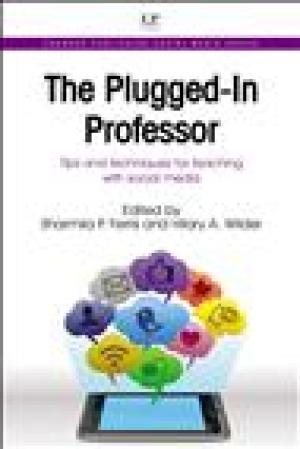
Click Here for Book Review Abstract: Provides a cutting-edge resource for academics and practitioners in effective ways of reaching today’s students through the use of their favorite tool, social media Outlines a range of strategies taking advantage of the unique learning styles and habits of net generation learners Exposes students to ways in which these technologies can be used in their professional and personal lives Reinforces students' growth as productive, reflective, and involved twenty-first century citizens New technologies are transforming the way students work. The Plugged in Professor provides a timely and exceptional resource for using social media and other new technologies to help college students meet both general and discipline-specific objectives. The title covers techniques built around well-known social networking technologies, as well as other emerging technologies such as mobile phone and tablet apps. With a practical focus and reader-friendly format, this book shows educators how to apply techniques in each technology, and includes clear student learning objectives, step-by-step directions, observations and advice, and supplemental readings and resources. Twenty-five chapters by leading contributors cover key aspects of new technologies in education, in four parts: Writing, research and information fluency; Communication and collaboration; Critical thinking and creativity; and Integrative learning. Readership: Educators in higher education, academics, teachers, and all those who wish to develop their techniques to more effectively reach the Net Generation will find this book useful. (From the Publisher)
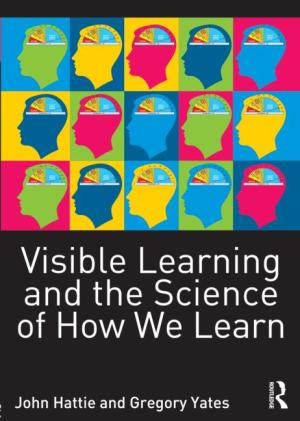
Click Here for Book Review Abstract: On publication in 2009 John Hattie’s Visible Learning presented the biggest ever collection of research into what actually work in schools to improve children’s learning. Not what was fashionable, not what political and educational vested interests wanted to champion, but what actually produced the best results in terms of improving learning and educational outcomes. It became an instant bestseller and was described by the TES as revealing education’s ‘holy grail’. Now in this latest book, John Hattie has joined forces with cognitive psychologist Greg Yates to build on the original data and legacy of the Visible Learning project, showing how it’s underlying ideas and the cutting edge of cognitive science can form a powerful and complimentary framework for shaping learning in the classroom and beyond. Visible Learning and the Science of How We Learn explains the major principles and strategies of learning, outlining why it can be so hard sometimes, and yet easy on other occasions. Aimed at teachers and students, it is written in an accessible and engaging style and can be read cover to cover, or used on a chapter-by-chapter basis for essay writing or staff development. The bookis structured in three parts – ‘learning within classrooms’, ‘learning foundations’, which explains the cognitive building blocks of knowledge acquisition and ‘know thyself’ which explores, confidence and self-knowledge. It also features extensive interactive appendices containing study guide questions to encourage critical thinking, annotated bibliographic entries with recommendations for further reading, links to relevant websites and YouTube clips. Throughout, the authors draw upon the latest international research into how the learning process works and how to maximise impact on students, covering such topics as: teacher personality; expertise and teacher-student relationships; how knowledge is stored and the impact of cognitive load; thinking fast and thinking slow; the psychology of self-control; the role of conversation at school and at home; invisible gorillas and the IKEA effect; digital native theory; myths and fallacies about how people learn. This fascinating book is aimed at any student, teacher or parent requiring an up-to-date commentary on how research into human learning processes can inform our teaching and what goes on in our schools. It takes a broad sweep through findings stemming mainly from social and cognitive psychology and presents them in a useable format for students and teachers at all levels, from preschool to tertiary training institutes. (From the Publisher)
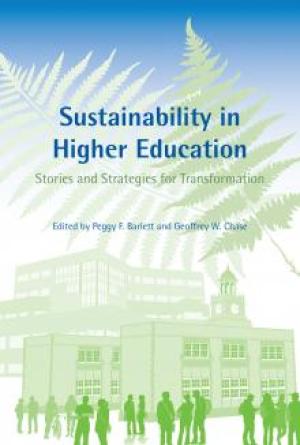
Click Here for Book Review Abstract: In colleges and universities across the United States, students, faculty, and staff are forging new paths to sustainability. From private liberal arts colleges to major research institutions to community colleges, sustainability concerns are being integrated into curricula, policies, and programs. New divisions, degree programs, and courses of study cross traditional disciplinary boundaries; Sustainability Councils become part of campus governance; and new sustainability issues link to historic social and educational missions. In this book, leaders from twenty-four colleges and universities offer their stories of institutional and personal transformation. These stories document both the power of leadership—whether by college presidents, faculty, staff, or student activists—and the potential for institutions to redefine themselves. Chapters recount, among other things, how inclusive campus governance helped mobilize students at the University of South Carolina; how a course at the Menominee Nation’s tribal college linked sustainability and traditional knowledge; how the president of Furman University convinced a conservative campus community to make sustainability a strategic priority; how students at San Diego State University built sustainability into future governance while financing a LEED platinum-certified student center; and how sustainability transformed pedagogy in a lecture class at Penn State. As this book makes clear, there are many paths to sustainability in higher education. These stories offer a snapshot of what has been accomplished and a roadmap to what is possible. (From the Publisher)